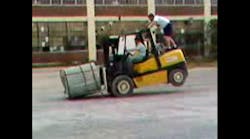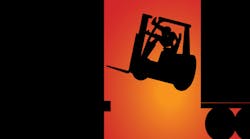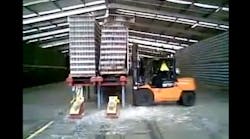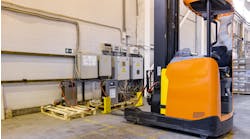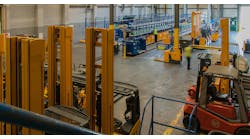Forklifts have capacity ratings for good reasons—physics being a big one. The problem is, forklift operators rarely have a physics degree and, instead, use logic (their own) to judge the manageability of a load. They’ve seen forklifts handle crazy-heavy loads, so they generalize that capability to the forklift they’re assigned to. If they’d only google the word “counterweight,” they’d find a definition even they could understand—like this one from Wikipedia:
“A counterweight is an equivalent counterbalancing weight that balances a load. Counterweights are often used in traction lifts (elevators), cranes and funfair rides. In these applications, the expected load multiplied by the distance that load will be spaced from the central support (called the "tipping point") must be equal to the counterweight's mass times its distance from the tipping point in order to prevent over-balancing either side.”
Well, maybe they wouldn’t understand that. And judging by the fact that tip-overs are the most common cause of forklift fatalities, many employers don’t even try to judge the capacity of their operators to learn such fundamentals. They simply give them the keys to the equipment and point them to the work. And this work can vary from shift to shift, just as the loads do.
Forklift Life Lesson #1 addressed the need to watch where you’re going and to avoid distractions. But our Lesson #2 is that even the most focused operator is no match for an unstable load. In a recent commentary, Tom Reddon, forklift specialist for National Forklift Exchange and part of the Material Handling Equipment Distributors’ Executive Dialogue board, offered some great advice that every employer should post in the cab of every forklift in their fleet:
“Never carry a load that requires another employee to physically stabilize the load as the forklift moves. Also, never carry a load that exceeds the truck’s maximum capacity. One sign of a load that’s too heavy is the rear wheels rise when the load starts to lift. In these cases, set down the load immediately, and either change the lift equipment or reduce the load weight.
“To maximize stability, the load should be squarely engaged and centered on the forks. It should rest against the backrest or vertical part of the forks. Also, the length of the forks must always be 2/3 the load length or greater. To prevent the load from tipping forward, the mast must be tilted backward. If necessary, spread the forks before lifting the load. As a rule of thumb, wider usually means better.”
These pointers could serve as a nice introduction to the laws of physics. But judging by the videos some people have been posting online, understanding the laws of physics wouldn’t be as fun as ignoring them. We’ve included a few of these in a new MH&L gallery titled “Physics-Flouting Forklifts Caught on Video.” Take a look and then tell me how many laws you saw broken.
